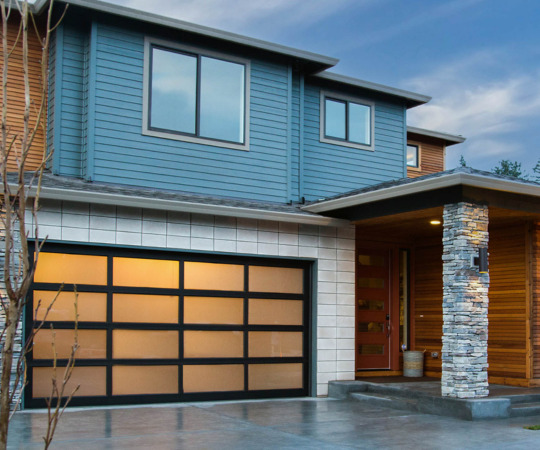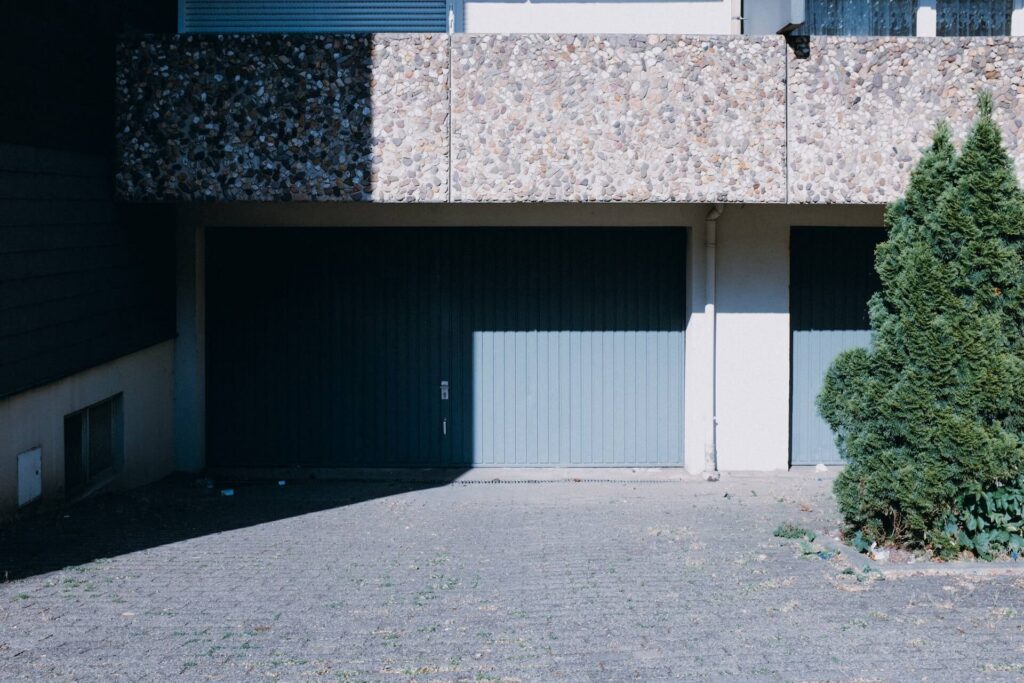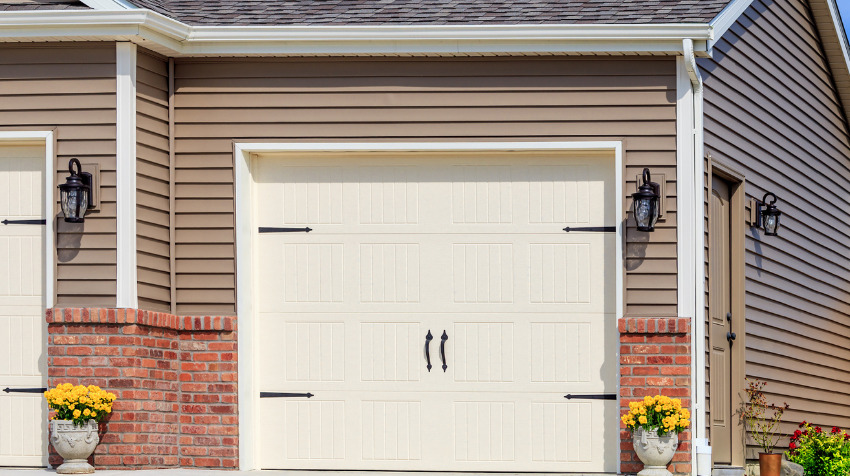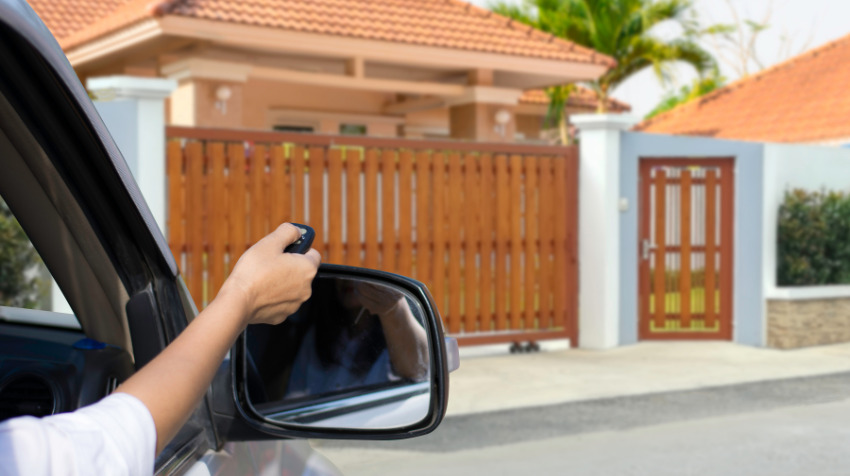Sectional Garage Doors
Sectional garage doors are one of the most popular styles of garage doors. These doors consist of horizontal panels that are connected by hinges and move along tracks installed on the sides of the garage door opening. As the door opens, the panels bend and curve to create a rolling vertical motion. Sectional garage doors provide many benefits compared to other garage door styles. This guide will explore the different types, features, benefits, considerations, costs, and more when it comes to sectional garage doors.
What are Sectional Garage Doors?
You’ve probably seen those nifty sectional garage doors on many homes in your neighborhood. But what exactly are they, and how do they work?
In a nutshell, sectional garage doors are made up of separate horizontal panels or sections that are connected by hinges. These hinges allow each panel to bend and flex as the door opens and closes.
The panels roll up and down vertical tracks along the sides of the garage door opening. The tracks guide the door’s movement and keep everything aligned properly. At the top of the tracks are cable drums that help lift the weight of the door via the cables and springs.
So when you hit that button to open your sectional garage door, the panels start gliding up those tracks in a rolling motion, bending at each hinge seam. The door moves straight up until the panels are stacked horizontally near the ceiling. It’s a pretty neat system!
The main advantage of this style is that sectional doors don’t swing out or take up driveway space. They stay tucked inside the garage when open. This saves precious space in your garage and on your property.
Now that you’ve got a handle on what sectional garage doors are all about let’s dig into the different types and options.
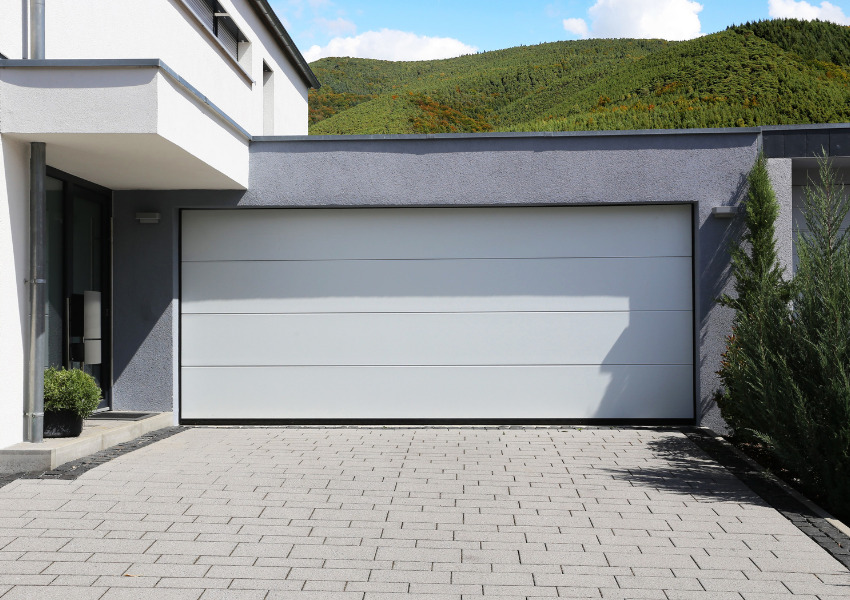
Types of Sectional Garage Doors
When it comes to sectional garage doors, you’ve got options! Here are some of the main types and styles to consider:
Materials
Sectional garage doors come in a variety of different materials:
- Steel – Most common and affordable option. Sturdy and durable. Can have insulation added.
- Aluminum – Lightweight and corrosion resistant. It’s more expensive but very low maintenance.
- Wood – Natural beauty and can be stained or painted. Requires more maintenance.
- Fiberglass – Durable, dent-resistant, and mimics the look of wood grain. Insulated models are available.
- Vinyl – Affordable, low maintenance, and mimics wood grain. Insulation can be added.
Insulation
Do you need an insulated door? This helps control the temperature in the garage:
- Insulated – Foam insulation sandwiched between panels. It’s better for heated garages.
- Non-insulated – No insulation, but less expensive. Fine for most detached garages.
Single vs. Double
This refers to the door size:
- Single – One door panel. Sizes from 8×7 to 10×8 typically.
- Double – Two door panels side by side. Allows for larger openings up to 20 feet wide.
Custom Options
Want to upgrade the look? Popular customizations include:
- Windows – Let light in and add curb appeal. Many shapes, styles, and tints are available.
- Color – Powder-coated or vinyl finishes in many colors to match your home.
- Decorative Hardware – Upgrade hinges, handles, and locksets for extra style.
- Carriage House Look – Masonry or wood overlays for a classic aesthetic.
The possibilities are endless for creating a sectional door that matches your personal style!
Features and Options
We’ve covered the major types of sectional garage doors; now, let’s dive into some of the cool features and options available. This is where you can really customize your door.
Windows
Adding windows is one of the most popular upgrades. Windows come in tons of shapes, sizes, and tints. Common styles:
- Square, rectangular, arched, or circular
- Clear, frosted, or tinted glass
- Plain or decorative grilles/muntins
Windows let light into your garage while adding curb appeal. Place them across the top or in design patterns.
Decorative Hardware
Replace standard hardware with stylish:
- Hinges – Black, brass, chrome
- Handles – Designer pulls and handles
- Locksets – Keyed handles or bars
Automatic Locks
Forget fumbling with keys! Choose an integrated automatic locking system that secures itself every time the garage door closes.
Smart Technology
Add Wi-Fi and voice control for total convenience. Open and close from your phone anywhere. Connect to home automation systems.
Energy Efficiency
Look for doors tested for:
- R-value: Higher numbers mean more insulation.
- Air infiltration rating: Lower numbers indicate better seals.
Warranties
Quality sectional doors come with 10-15-year warranties on hardware and springs. Make sure they transfer if you sell the home.
Openers and Keypads
Openers provide remote and voice operation. Keypads allow touchpad entry (great for deliveries).
Pedestrian Doors
A walk-through side door provides direct garage access without opening the main door.
The options are practically endless for a custom sectional garage door. Investigate what features matter most for your home and lifestyle!
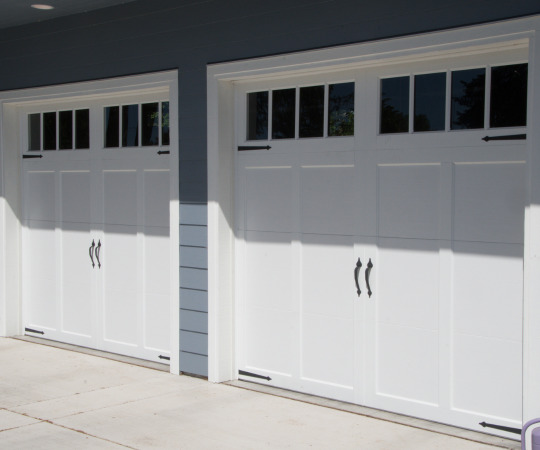
Benefits of Sectional Garage Doors
Sectional garage doors offer some great benefits compared to old-school swing-out doors or roll-up doors. Here are some of the top reasons to consider a sectional:
Space Saving
Since sectional doors open vertically, they don’t swing out and take up driveway space like old one-piece doors. Those doors needed several feet of clearance to swing out and up.
With a sectional door, you can park your vehicles right up close to the garage door opening. The door rolls up and tucks neatly under the ceiling inside your garage.
This also maximizes the usable space inside your garage. You don’t lose any footprint space to a swinging door.
Appearance and Customization
Let’s be honest: your garage door is a focal point on the front exterior of your home. With sectional doors, you’ve got tons of options for materials, windows, color, and decorative hardware to match your home’s style.
Go modern with a sleek steel door. Get a natural wood look with a woodgrain fiberglass door. Add charming windows or carriage house-inspired handles and hinges. You can find a sectional door to match any architectural style.
Durability and Reliability
The panel and track system of sectional doors make them very sturdy and durable. Each panel interlocks tightly and moves in unison along sturdy tracks.
If a section does get damaged, you can conveniently swap out a single panel rather than replacing the entire door. This saves money on repairs.
Properly installed and maintained sectional garage doors will provide decades of smooth, reliable operation. The hardware is designed to handle constant opening and closing without much fuss.
Temperature Control
Insulated sectional garage doors with thermal seals help regulate interior garage temperature. This keeps your garage warmer in winter and cooler in summer.
For garages that are also used as workshops or living spaces, temperature control is a priority. Insulated sectional doors prevent drafts and make the space more comfortable.
Security
The tight panel connections on sectional doors make it very difficult to force open once closed and locked. This deters burglars who might try breaking in through the garage.
You can add even more security with automatic garage locks operated by remotes or smartphones. These locks automatically each time you close the door.
With their durability, security features, and custom options, sectional doors truly offer the complete package. It’s easy to see why they are the favorite style of garage door for most homeowners.
Considerations When Choosing
Ready to upgrade your garage with a new sectional door? Here are some factors to consider as you choose the perfect door.
Garage Size and Clearance
Measure the height and width of your garage opening to ensure the sectional door will fit properly. Also, check the side room, backroom, and ceiling clearance. Sectionals need headroom for the tracks.
For small garages, single sectional doors are ideal. Double sectionals work better for wide openings.
Insulation Needs
Think about how you use your garage. Is insulation a priority? Insulated sectionals have foam between panels. These help control temperature.
Non-insulated doors are fine for most detached garages not used as living spaces.
Noise Levels
Some sectional doors can be noisy, especially steel models without insulation. If noise is an issue, look for doors tested and rated for quieter operation.
Budget
Sectional doors range widely in price. Basic steel models start under $1000, while premium wood or fiberglass doors with all the bells and whistles can cost over $4000 installed. Set a budget before shopping.
Aesthetics
Be sure to choose a door style that fits your home’s architecture. Drive around and look at what neighbors have. Compare materials, windows, and hardware options.
DIY vs. Professional Install
Handy homeowners can DIY basic sectional door installs. But for tricky retrofits or heavy double doors, hiring a pro ensures it’s done correctly.
Consider all these factors before choosing your sectional door. Identifying your must-have features and measuring your garage precisely will make the selection process easy.
Choosing the Right Installer
Installing sectional garage doors properly requires expertise. While DIY is possible for basic installs, hiring a professional installer is highly recommended. Here’s how to choose the right installer:
- Experience – Look for an installer that has many years of experience, specifically installing sectional doors in your area. They’ll know all the intricacies.
- Licensed and Insured – This protects you in case of damages or injuries during installation. Verify they have active licenses and liability insurance.
- Manufacturer Authorized – Installers that are authorized by sectional door manufacturers have undergone certified training on that brand’s products. This ensures proper installation.
- Reviews and References – Do your homework by reading reviews and asking for references from past clients. Check for consistent positive feedback.
- Multiple Quotes – Get bids from at least 3 reputable, established installers so you can compare pricing. Be wary of quotes that seem too good to be true.
- Warranty – Choose an installer that guarantees their labor and will come back out to fix any issues. Many offer 1-2 year warranties on install workmanship.
Doing the legwork to find an experienced, reputable sectional door installer gives you peace of mind that your new door will function as intended for many years. Don’t cut corners when it comes to hiring a garage door pro.
Operation, Maintenance, and Repairs
Sectional garage doors are designed for reliable operation with minimum maintenance. But it’s still important to follow good care and maintenance practices. Here are some tips:
Manual vs Automatic Openers
Sectional doors can be opened manually by lifting the handle or adding an automatic opener. Openers provide remote access and convenience.
With openers, be sure to keep remotes and keypads out of reach of children. Turn off automatic functions if you are on vacation.
Routine Maintenance
- Inspect tracks – Check for debris in tracks monthly. Clean them out to avoid obstruction.
- Lube hardware – Apply silicone spray lube to rollers and hinges every six months. Avoid grease that attracts dirt.
- Test auto-reverse – Make sure electric eyes reverse the door if obstruction is triggered.
- Balance adjustment – Have a pro adjust spring tension and balance yearly to ensure smooth operation.
Troubleshooting Issues
- Won’t open/close – Check power, disable lock, and test opener disconnect. Engage manual release if needed.
- Noisy operation – Apply lube to rollers/hinges and tighten hardware. Replace worn rollers if needed.
- Broken spring – Don’t try to remove old torsion springs yourself. Call a pro for safe spring replacement.
- Dented panel – Swap out a dented section panel following the manufacturer’s instructions.
With periodic maintenance and immediate attention to any problems, your sectional door will stay in good working order. Know when DIY repairs aren’t recommended, and it’s safer to call a professional.
Costs of Sectional Garage Doors
What can you expect to invest in a new sectional garage door? Here’s a look at the costs:
- Door – $500 – $1500 for an uninsulated single steel door. $1000 – $4000 for high-end double doors with insulation, windows, etc.
- Installation – Average $300 – $700 for professional installation. More for complex retrofits.
- Opener – Basic openers start around $150. Feature-loaded smart openers run $350+.
- Accessories – Keypads, WiFi modules, and automatic locks add $50 – $150 each.
Total – Basic DIY install of a steel sectional door with no opener: Around $1000 – $2000.
Higher-end professional install of an insulated double-size wood door with all the bells and whistles: $4000 – $8000.
Prices vary based on your exact specifications. Be sure to get an itemized quote from reputable local dealers to understand the exact costs of your project.
Factor in costs beyond just the door itself, like structural repairs, new jambs, electrical work for openers, disposal of old doors, etc. Discuss all needs with your installer.
While not cheap, sectional garage doors are a worthwhile investment in your home’s beauty, safety, and comfort that returns dividends through increased property value and lower energy costs.
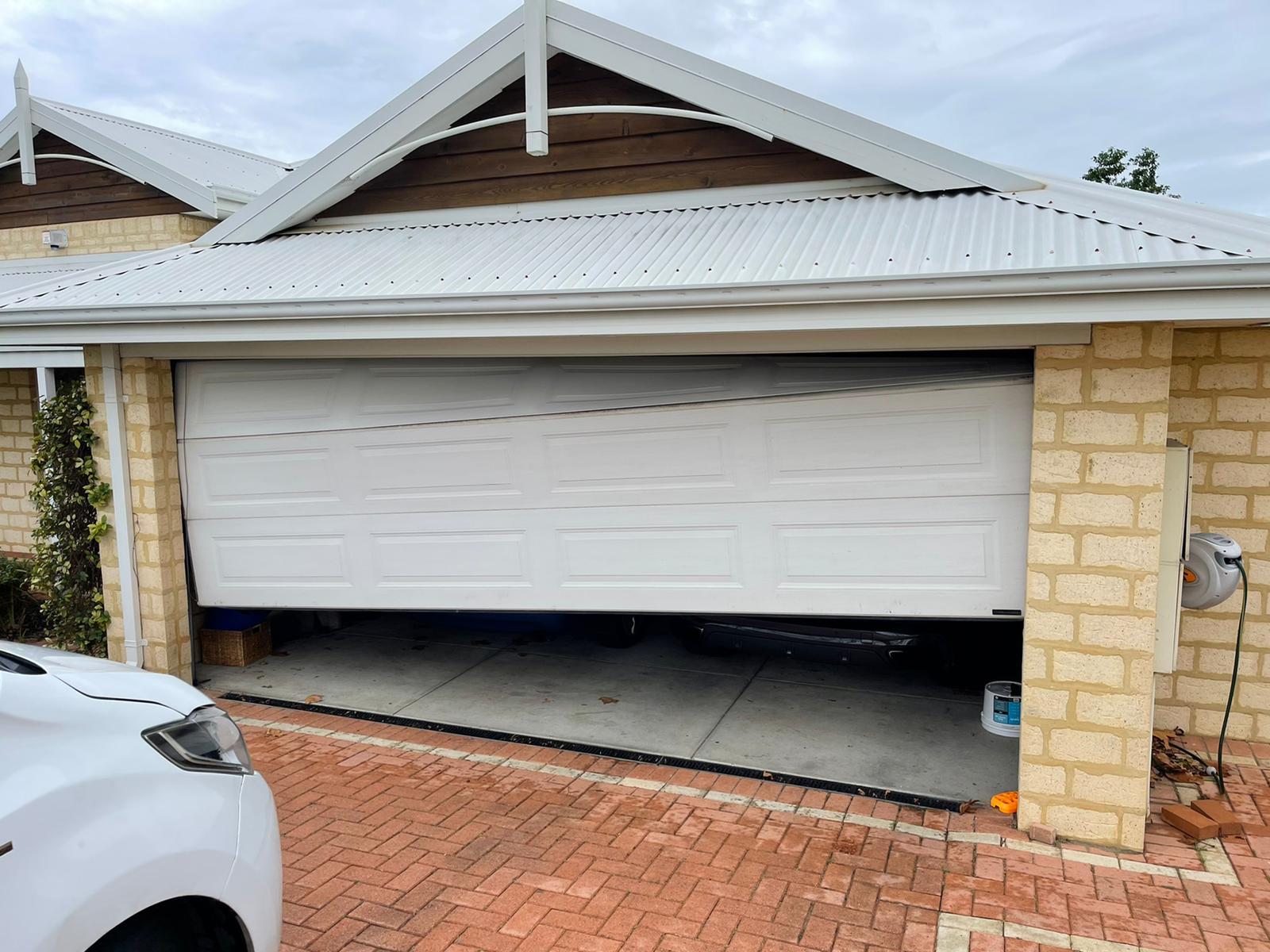
FAQs
Do you have questions about sectional garage doors? Here are answers to some frequently asked questions:
What’s the difference between single and double sectional garage doors?
- Single doors have one section that’s typically 8 to 10 feet wide. Double doors have two sections side-by-side for wider openings up to 20 feet.
How do insulation ratings for sectional garage doors work?
- Insulated doors have R-values ranging from 4 to 12. Higher numbers mean more insulation against heat/cold transfer.
What safety standards should I look for when buying a sectional door?
- Look for labels indicating the door meets current ANSI/DASMA safety standards for opening force and entrapment protection.
Can sectional garage doors be automated?
- Yes! Adding an automatic opener motor allows remote and voice control operation via wall buttons, remotes, smartphones, and smart home systems.
How much headroom do I need for a sectional garage door?
- Typically, 12″-18″ of clearance between the top of the door opening and the ceiling. Tracks are mounted just under the ceiling.
What maintenance does a sectional garage door require?
- Occasional hardware lubrication, routine opener tests, and minor adjustments. Have a pro inspect annually.
How long should a sectional garage door last?
- Properly installed and maintained sectional doors typically provide 20-30 years of smooth operation.
What factors affect the cost of sectional garage doors?
- Size, materials, insulation, windows, hardware upgrades, accessories, professional installation, and any repairs needed.
Are sectional garage doors secure?
- Their tightly interlocking panels make them very hard to force open when locked. Automatic lock systems add further security.
Can I install a sectional garage door myself?
- Basic installs are DIY-friendly. But for heavy double doors or tricky retrofits, hiring a pro ensures proper operation and safety.

